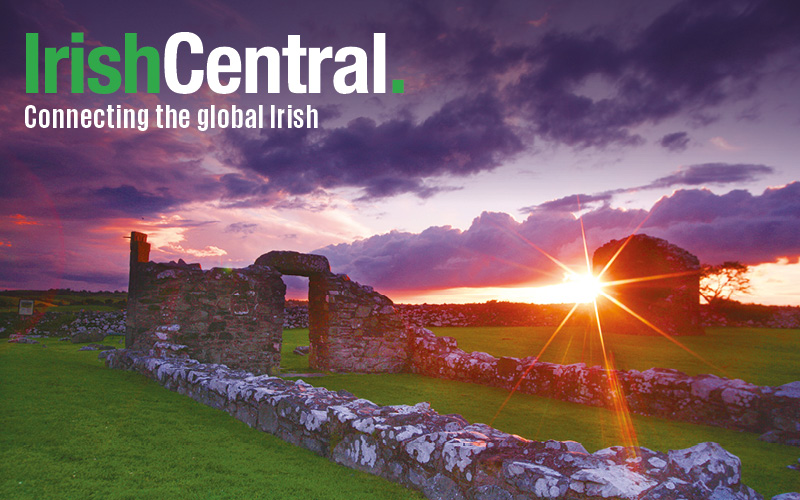How you can find Ireland in the US south
Located just three blocks from the Alamo in downtown San Antonio, Texas, America’s seventh most populous city is the neighborhood once known as the Irish Flats.
One of the few houses of the original residential community founded by Irish immigrants in the 1830s is still standing on McCullough Avenue. Now this house, leased from the First Presbyterian Church for just $1 a year, is an interfaith community center, the peaceCENTER, working for justice.
While the Irish Flats was not founded until the 1830s the history of the Irish in San Antonio and South Texas begins with Spain's colonial experience. In 1768, Hugo O’Connor, a native of Dublin, became interim governor of Texas and laid the cornerstone of Mission San José.
In 1777 Fray Juan Agustin Morfi, known as Murphy, wrote one of the earliest histories of San Antonio. Around the same time, Belfast-born Philip Nolan created one of the first detailed maps of Texas.
In 1828 two Irish men, John McMullen and James McGloin, signed a contract with the Mexican government and settled 200 Irish Catholic families on 80 leagues of land, now known as San Patricio County (St. Patrick). These first Irish came from New York and arrived at El Copano and Matagorda in October 1829. Others soon followed including James Power and James Hewetson who brought families from Wexford to Refugio, in 1834.
The Irish met with resistance from those already settled on the land, the Karankawa Indian tribe, believed to have been resident in the area since the 1400s. The Federal Writers Project reports that the Irish community was wiped out twice in massacres. Many newspaper sources say the settlers moved to San Antonio to get away from these attacks while the “New Handbook of Texas” reports that they came after the revolution in 1839.
When the settlers arrived in San Antonio they settled in the flat area, bounded by Alamo Plaza and Houston Street to the south, Avenue C to the west, 6th Street to the north, and (the present day) Interstate 35 previously the Acequia Madre to the east. The area was originally part of the Alamo farm north of the mission.
Although it is now downtown San Antonio, in the middle of the city, then it was a remote settlement.
The name of the area remains a mystery of sorts with varying versions of the tale. Some say it was known as “The Flat” and was only dubbed the “Irish Flat” after a painting by Spanish artist Jose Arpa named it so. Other say that the “s” came out of the fact that British and Irish people call apartment buildings “Flats”...and so the name was born.
The areas suited the Irish immigrants. The local streams nourished the land and every house had its own vegetable gardens surrounded by pecan trees and huisache, cosmos, and crepe myrtles. Their homes were similar to those in Ireland but also influenced by the Spanish and Germans. The houses ran flush to the street, with small front porches, low ceilings and thatched roofs, just like home. Eventually, the roofs became shingles and then tin.
The homes' thick walls kept the residents cool and their windows were covered with wooden shutters. The houses were surrounded by fences to keep out pigs and goats. Reports say the neighborhood had an old-world European feel, reminiscent of Ireland but also of Southern France and Germany.
Contemporary newspaper accounts tell of parties thrown by the Irish settlers where the Irish whiskey would flow.
The Irish, mostly Catholic, worshiped at St. Mary’s Church, the first in the city to offer Mass in English.
In 1850, the population of San Antonio was only 3,500, but by 1856 it had risen to about 10,000.
The city became the headquarters for part of the frontier army and even more Irish people moved into the city to serve as teamsters, transporting supplies to the frontier forts.
San Antonio prospered during the Civil War as the Union blockade of the Gulf of Mexico made the city one of the major centers for Mexican trade. After the war this market collapsed, real estate became worthless, and the city was broke. However, the city's fortunes changed again when the railroads were extended to Kansas City and money poured into provision the cattle drivers.
By 1870 the population of San Antonio was 12,256, making it the largest city in Texas. It remained the largest city until 1930. By 1890 the population had almost tripled, to 37,673.
Many of the Irish settlers had found success and moved to more prosperous neighborhoods. Many moved to Fort Sam Houston, built in 1876.
By the 1900s the area was being revamped. On June 21, 1927, the San Antonio Express-News reported on the "Quaint Buildings Mark Old Irish Flats" and said, "All but a remnant here and there of the Old Irish Flats have passed into San Antonio history."
By the 1950s most of the residences had been converted or torn down. The Irish Flats were no more.
Today, the primary cultural legacy of those Irish settlers in San Antonio is parades. Every St. Patrick’s Day thousands turn out to celebrate the local Irish history and heritage with an Irish fiesta.
*Originally published in February 2015.




Comments